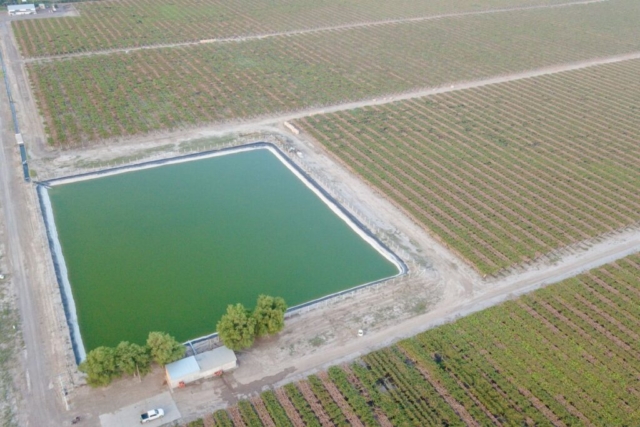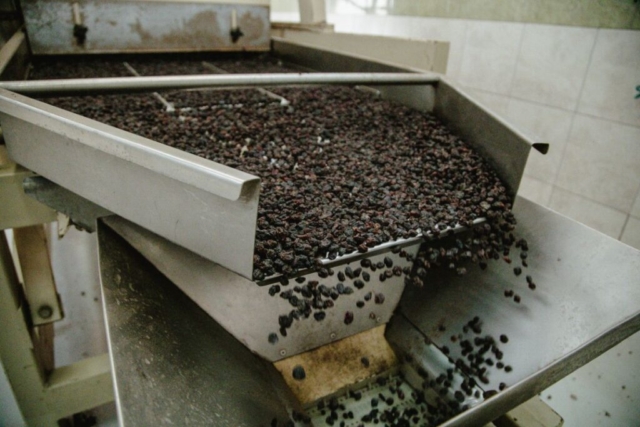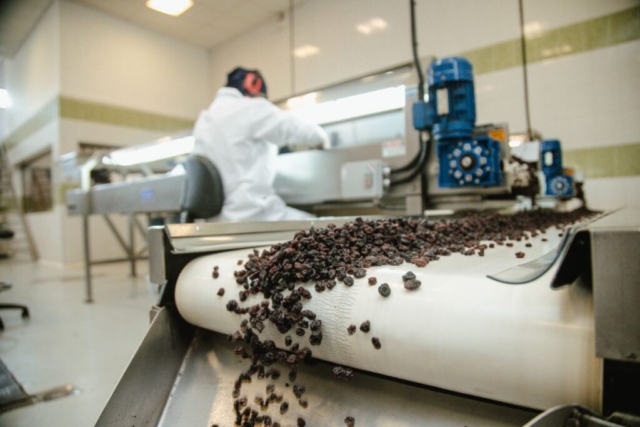PRODUCTION PROCESS
QUALITY
POLICY
From its growing to its dispatch, there is a thorough supervision in our grape raisin production carried out by highly committed specialists who seek nothing but the highest standards in every task they undertake. We have the latest technology available for the processing of raisins: Laser Helius (detector of any foreign object), Ixus X-Rays, drying oven and our commitment to produce high quality raisins to compete in an increasingly growing market; trying to stay at the forefront of quality and customer satisfaction.
All our processes are certified by HACCP, BRC and KOSHER standards.
THE PROCESS
First steps
The first step in top quality grape raisin production is vineyard growing. Working with grapes requires an all-year-round dedication with organized pruning, careful irrigation, appropriate fertilization and cautious pest control.
Pruning consists of eliminating parts of the vine to foster its growth so as to even up the quality of all the grapes in the vineyard. This is done in June and August. The irrigation is carried out in summer, when the vineyards are growing, in order to keep a continuous flow of water in the soil while the fertilizers are used according to the needs of the vine; the most commonly employed fertilizers are nitrogen and other zinc-based products. The fertilization of the land is also done in summer.
Vineyards are, by nature, prone to different pests and insect infection. Different chemicals and biological products are used to control mite and other types of insects; sulfur powder is also employed to prevent mold and other fungi from developing.
Harvest
From mid January to March, grapes are harvested because they have the highest sugar level. The bunches are hand cut by rural workers and then put in boxes which are in turn palletized to be taken to the drying shed; the latter is built entirely from clean stones which allow for a homogenous drying process and, in the case of rainfall, a quick draining.
We also have extensions planted with the DOV (dry on vine) system with fully mechanized harvest.
Once at the drying shed, the pallets are downloaded automatically and then the grape bunches are placed on racks under the sun.
Drying
Depending on weather conditions, the grapes are dried for 2 or 3 weeks ; during this period, there is a 75% decrease on their humidity level and by the time they reach their driest peak the loss is of less than 15%. This when the grapes are ready to be collected and put in bins to be taken to the area where they are fumigated and stored in sheds before the final processing.
This starts with the second fumigation of raisins with aluminum phosphide which in contact with the air releases phosphine which allows the eradication of all insect or egg alive that may still be on the raisins. The next step is to de-stem and calibrate the raisins in order to dry all types of stems and leaves to be customized according to clients’ needs.
Washing
What follows next is the washing of the raisins to remove any dirt left; the raisins are polished with vegetal oil thus enhancing and protecting their skin.
We use a Best laser sorter of the highest technology to detect and separate any foreign agent on the raisins or to put aside any raisin that does not meet the required demands.
After that, our experts visually evaluate the raisins to ensure the excellence of the product. Finally, the raisins go through an X-ray IXUS machine which examines them both externally and internally.
Weighing and packing
The last step is the weighing and packing of the product; the box is sealed and goes through a Penta metal detector to be palletized and loaded in a shed with temperature and humidity control
All the handling of the product is carried out with electric forklifts, thus contributing to the care of the product and the environment.







































